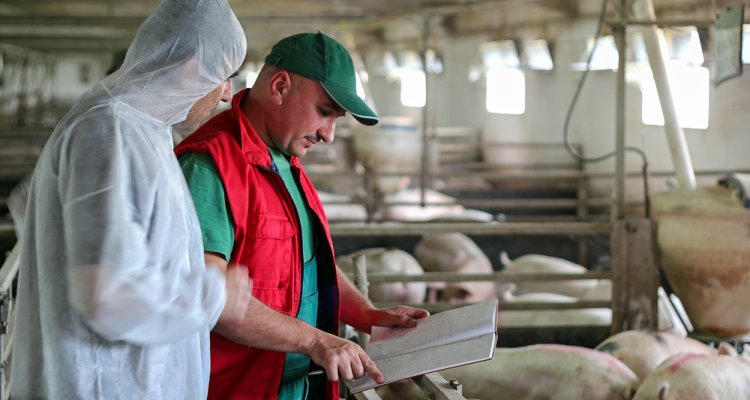
Showcase
How to measure resilience in animals?
Farm animals need to be resilient; they need to be able to respond to short-term environmental challenges (for example disease and temperature fluctuations) and remain healthy and productive under changing conditions. But resilience is a dynamic and complex trait, which makes it difficult to measure and characterise.
The Animal Breeding and Genomics group (ABG) works on developing mathematical models with biologically meaningful parameters to obtain quantitative resilience indicators. Quantification of resilience (that is, being able to measure resilience and giving it a numeric value that can be used for statistical, mathematical or numerical analysis) at individual level would make it possible to include resilience as a trait into future breeding programmes. This would have a positive effect on the capacity of animals to adapt to environmental challenges and therefore potentially reduce the impact of environmental stressors and disease.
The LSR method: capturing impact on variability
In livestock farming we aim for stable health and welfare of animals. One way to achieve this is by protecting animals from disease and discomfort as much as possible. The living environment of animals is controlled to a high extent. In such a system, animals are highly dependent on successful protection and timely intervention of farm workers in case protection fails. This is the Control model. An alternative way is to prepare animals for disease and dynamic conditions that regularly occur in their living environment. They will adapt to stressors and minimise the impact. This is the Adaptation model.
Both insufficient protection and inadequate adaptation lead to more variation in health, welfare and performance. The challenge is to identify what induces and what reduces this variation. Resilient farming systems show minimal increase in variation in dynamic conditions. The LSR method involves experimental designs that generate sufficient variation and provides a tool to analyse it for more resilient farming systems.
Read more about the LSR method in the practical guidelines.